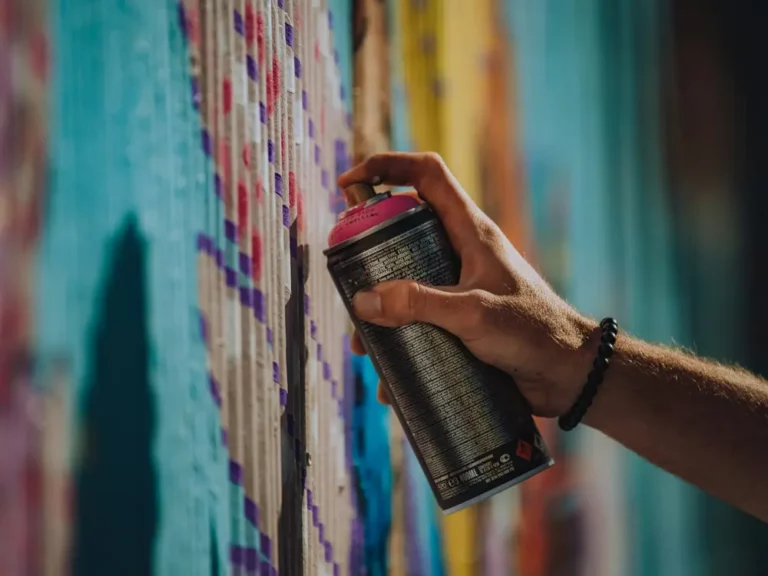How Long Does Grout Take to Dry: A Quick and Straightforward Guide
Grout is an essential element in tile installations, offering both stability and an aesthetically pleasing finish. However, for a successful project, it’s vital to understand the drying process and how long it takes for grout to dry properly. By following the manufacturer’s guidelines and considering factors like humidity and temperature, you can ensure your grout dries evenly without compromising the integrity of your installation.
The drying process for grout varies depending on the type used, the environmental conditions, and the joint width. On average, it can take from 24 to 72 hours, but keep in mind that even after this time, it may not be completely cured. This article will provide practical tips for properly drying grout and the implications of improper drying. Additionally, it will cover the importance of sealing the grout once it has dried.
Key Takeaways
- Grout drying time varies, generally taking between 24 and 72 hours to dry.
- Proper drying techniques help maintain grout integrity and prevent cracks or discoloration.
- Sealing the grout after the drying process is important for long-term durability.
Understanding Grout
What is Grout
Grout is a dense fluid material commonly used to fill the gaps between tiles, providing both support and protection. It assists in establishing a strong bond between tiles and prevents water and dirt from penetrating the spaces. The selection of appropriate grout depends on factors such as tile type, location, and desired appearance.
Types of Grout
Grout can be categorized into several types, each with unique properties and appropriate applications:
- Sanded Grout: Contains fine sand particles, providing extra strength and durability. Ideal for wider grout joints (1/8 inch or more) and frequently used with floor tiles.
- Unsanded Grout: Does not contain sand, resulting in a smoother texture. Suited for narrower grout joints (less than 1/8 inch), making it an excellent choice for wall tiles and delicate materials like glass or marble.
- Epoxy Grout: A two-part, chemical-resistant, and water-resistant grout made from epoxy resins and fillers. Its non-porous nature makes it ideal for areas with high water exposure like swimming pools and commercial kitchens.
- Cementitious Grout: A traditional, cement-based grout composed of cement, aggregates, water, and sometimes admixtures. Commonly used for most tile installations, indoor and outdoor.
- Furan Grout: A type of grout made from polymers of furfuryl alcohol and reinforced with fibers. Highly resistant to chemicals and temperature fluctuations, making it suitable for industrial applications.
- Urethane Grout: A pre-mixed, water-based grout that is stain-resistant and less prone to shrinkage. It can be used for both sanded and unsanded applications, providing flexibility in usage.
Grout Components
The main components of grout include:
- Cement-based grout: Cement, sand, water, and in some cases, admixtures (e.g., for improved flexibility, color consistency, or water resistance).
- Epoxy grout: Epoxy resins, a hardener, and a filler, which when combined create a chemical reaction resulting in a durable, water-resistant bond.
- Furan grout: Furfuryl alcohol-based monomers, a catalyst, and reinforcing fibers that create a strong grout capable of withstanding harsh environments.
Different types of grout serve different purposes based on their unique characteristics. Selecting the appropriate grout for a specific tile installation project ensures both functionality and longevity.
Grout Drying Process
Stages of Drying
Grout drying occurs in two main stages: the initial drying phase and the curing phase. During the initial drying phase, excess moisture evaporates from the grout, allowing it to harden. This stage typically takes 24-48 hours depending on factors such as humidity, temperature, and material composition. Once the grout has hardened, the curing phase begins. This phase, also referred to as the chemical curing process, involves molecular changes within the grout that strengthen its bond. Curing times can vary significantly, usually ranging from 7 to 14 days.
Factors Affecting Drying Time
Several factors can influence the drying time of grout, including:
- Humidity levels: High humidity levels can significantly extend the drying time, while lower humidity levels promote faster drying.
- Temperature: Grout tends to dry more quickly in warmth and can take longer in cold temperatures.
- Material: Different grout materials have varying drying times, with epoxy and cementitious grouts being examples of materials with distinct drying times.
Delaying Factors
Certain elements can extend grout’s drying time, such as:
- Wet sponge: Using a wet sponge during the clean-up process can reintroduce moisture to the grout, prolonging drying time.
- Water damage: Areas with water infiltration or damage can slow down the grout drying process by re-introducing moisture.
- Cold temperatures: As mentioned above, cold temperatures can negatively impact the drying process by slowing down the evaporation of moisture and chemical reactions.
Signs of Drying
To determine whether your grout is drying properly, look for these indicators:
- Appearance: As grout dries, its appearance will change from a darker, wet color to a lighter, dry shade.
- Firmness: As the grout hardens, it will become firmer to the touch and should not dent or crumble when pressed.
- Cracking: Properly drying grout should not exhibit signs of cracking, as this can indicate that the drying process was uneven or too rapid.
Effects of Improper Drying
Grout Problems
Improper drying of grout can lead to several issues that may negatively impact the appearance and durability of the tiled surface:
- Mold and mildew growth: Excess moisture promotes the growth of mold and mildew, which can cause staining and unpleasant odors.
- Weak joints: Grout that dries too quickly or unevenly may result in weak joints, ultimately increasing the risk of damage and failure of the tiled surface.
- Staining: Insufficient drying time can cause grout to absorb moisture and other substances, leading to discoloration and staining.
Strategies for Addressing Issues
To prevent or address the problems associated with improper drying of grout, consider the following measures:
- Proper drying time: Allow enough time for the grout to dry, typically 24-48 hours before exposing it to water or moisture.
- Ventilation: Ensure adequate air circulation in the area where grouting is performed, this helps prevent mold and mildew growth.
- Use a fan or dehumidifier: If necessary, use a fan or dehumidifier to remove excess moisture during the drying process.
- Removing and regrouting: In cases where mold, mildew, or other issues are already present, it may be necessary to remove the old grout and apply new grout to ensure a solid, long-lasting bond.
Managing Humidity and Temperature
Indoor Temperature and Humidity Management
Maintaining the right temperature and humidity levels is crucial for the proper drying of grout. Aim for a room temperature of around 68°F to 72°F (20°C to 22°C) to promote even drying. You can use a thermometer and a hygrometer to monitor these conditions.
To control humidity, consider using a dehumidifier if the moisture level is above 60%. Increasing ventilation in the room can help as well, either by opening windows or using a fan. However, avoid directing the fan directly at the grout, which can cause rapid drying and lead to cracks. Additionally, eliminate excess moisture by limiting indoor plants and using an air conditioner.
Outdoor Grouting
Outdoor grouting is highly dependent on weather conditions and environmental factors. Try to schedule grouting projects during times with low humidity and moderate temperatures. In tropical climates, mornings or late afternoons are usually the least humid times to work.
Keep in mind that temperature and humidity may fluctuate greatly throughout the day in tropical climates. If the weather is too unpredictable, consider rescheduling or using protective coverings to shield the grout from unfavorable conditions.
Practical Tips for Drying Grout
When working with grout for your tiles, whether it’s a DIY kitchen project or an exterior project, it’s essential to allow the grout ample time to dry for best results. Here are some practical tips to achieve that perfect dry time for your indoor and outdoor tiling projects:
Tips for Indoor Tiling
- The typical drying time for floor tiles and wall tiles is 24-48 hours. To allow for proper curing, avoid walking on or touching the tiles during this time.
- Ensure adequate air circulation and ventilation in the room to speed up the drying process. You can do this by using a fan or opening windows.
- Prioritize working in dry and cool conditions. High humidity levels can prolong the drying time, so try to schedule your project away from extreme weather like rain or high temperatures.
- For specific projects such as kitchen and bathroom floors, wait at least 72 hours before placing heavy appliances or furniture on newly installed tiles.
Tips for Outdoor Tiling
- Outdoor tiling projects often have different drying times compared to indoor projects due to fluctuating temperatures and weather conditions. In general, aim for roughly 48-72 hours of dry time for outdoor grout.
- Keep an eye on the weather forecast and schedule your exterior projects during optimal weather conditions. Avoid working during rain, storms or extreme temperatures.
- Place a protective cover over your project to shield it from direct sunlight and rain, especially in the first 24 hours after grouting. Ensure that the cover does not touch the surface, as it may disturb the drying grout.
- If you’re grouting around exterior plants, ensure they receive adequate water without their runoff affecting your project. Use strategically placed watering devices to minimize water contact with the tiles.
- For exterior tiles with larger, heavier traffic loads, consider using a quick-setting grout designed to withstand wear and tear. Always follow the manufacturer’s instructions for drying times.
By following these practical tips for drying grout in your indoor and outdoor tiling projects, you can ensure a durable and long-lasting tiled surface.
Sealing the Grout
When to Seal the Grout
It is crucial to allow the grout to dry before sealing it. Typically, grout drying time ranges from 24 to 72 hours. However, this time may vary depending on factors such as the type of grout, tile material, and humidity levels. To ensure optimal results, it is essential to follow the manufacturer’s instructions on the grout packaging.
How to Apply Sealer
Before applying the grout sealer, ensure the grout lines are clean and dry. Then, carefully follow these steps:
- Choose the right sealer: There are various grout sealers available, including penetrating and non-penetrating options. Consider the type of grout and tile material used to select the appropriate sealer.
- Gather necessary tools: Depending on the grout sealer, you may need tools like a brush, roller, or spray applicator. Ensure you have the right application tools and protective gear like gloves and goggles.
- Follow the instructions: Refer to the manufacturer’s instructions on the sealer packaging to determine the application method and drying time.
- Apply the sealer: Using your chosen applicator, apply an even layer of grout sealer along the grout lines. Avoid excessive amounts, as this can lead to residue buildup on the tiles.
- Wipe off excess: After allowing the sealer to penetrate the grout, remove any excess using a clean, damp cloth. Wipe along the tile surface to avoid smearing the sealer.
Remember that the DIY process might be different for each grout sealer, so it’s crucial to follow the specific instructions of the product you choose. Taking your time to correctly seal the grout will lead to a durable, protected surface.
Conclusion
In summary, the drying time for grout can vary depending on a number of factors, including the type of grout being used, the conditions of the installation environment, and the application method. However, it is generally safe to say that grout will require at least 24 to 48 hours to dry or cure properly.
It is important to consider these factors when planning a tile installation project. This will ensure optimal results and minimize the potential for issues related to improper grout drying.
To recap some key points:
- Type of grout: Different grout formulations have varying drying times. For instance, epoxy-based grouts typically cure more quickly than cement-based grouts.
- Installation environment: Temperature and humidity levels significantly impact the drying process. A cool and/or humid environment will slow down the drying time, while a warm, dry environment will promote faster drying.
- Application method: Proper mixing and application of grout can help ensure consistent drying times. Inadequate mixing or using too much water in the grout mix can lead to longer drying times.
By keeping these factors in mind, you can better manage your project timeline and expectations around grout drying times. It is always a good idea to consult the manufacturers’ guidelines for specific information on drying times and proper handling of the chosen grout.
Frequently Asked Questions
When can grout be sealed after application?
Grout should typically be sealed after it has fully cured, which is usually around 48 to 72 hours after application. It’s crucial to wait for the curing process to complete in order to prevent trapping moisture underneath the sealant.
How long should I wait before walking on newly applied grout?
For most types of grout, it’s recommended to wait at least 24 hours before walking on the surface. However, some fast-setting grouts may require a shorter waiting period. Always check the manufacturer’s recommendations to be certain.
What is the drying time for epoxy grout?
Epoxy grout typically takes about 24 hours to cure. However, this curing time could vary depending on the ambient temperature, humidity, and manufacturer’s specifications. It’s best to consult the product label or manufacturer for specific details.
Is fast drying grout suitable for showers?
Yes, fast drying grout can be suitable for showers. In fact, it may be beneficial in certain situations, as it reduces the waiting time before the shower can be used. However, always verify that the product is compatible with your chosen tile and the specific requirements of your project.
Can a hair dryer expedite grout drying?
Using a hair dryer is not recommended for expediting grout drying. Grout requires a specific curing time, and rushing the process can compromise its strength and durability. Instead, let the grout dry and cure naturally.
How long should grout cure before using a shower?
Grout should generally cure for at least 48 to 72 hours before using a shower. This timeframe ensures that the grout has had a chance to set and gain strength. However, always refer to the manufacturer’s recommendations for specific product guidelines.


